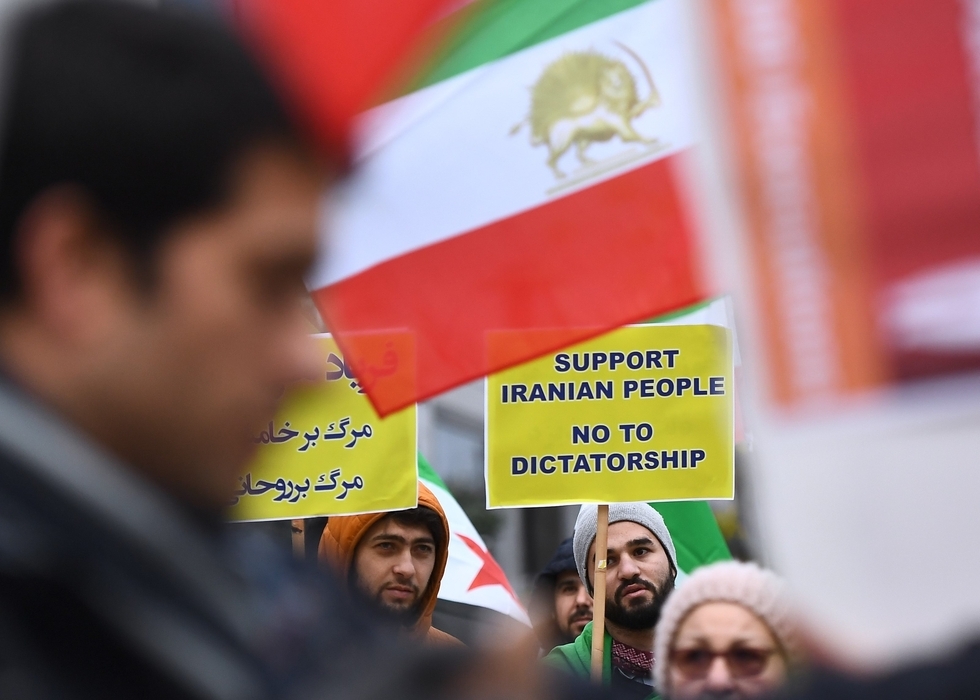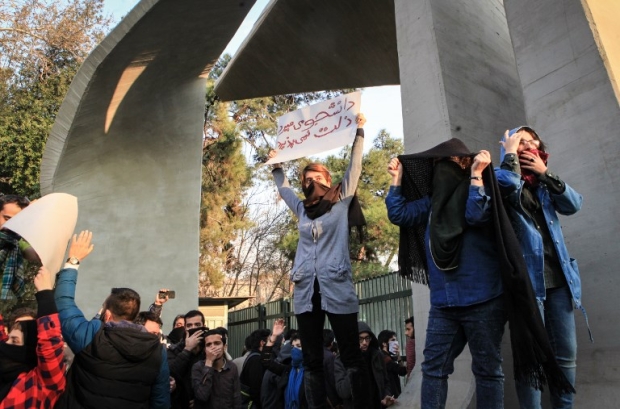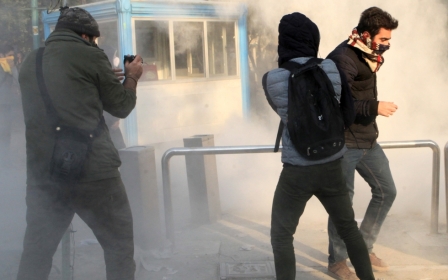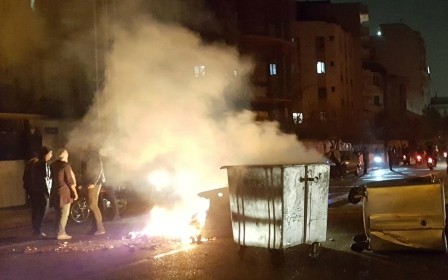The Iranian dilemma: From the bread riots to questioning the legitimacy of the regime

On 28 December 2017, Iran witnessed a popular uprising. Mass protests erupted across the country from north to south and from east to west and in most of the main cities, from Mashhad to Kermanshah and Arak to Tehran.
How this popular movement started and how it might end are questions still to be addressed.
A tangible segment of the Iranian people continues to believe in the republic despite its ills
A dire economic situation
In the early days of the protests, the regime assessed the situation in two ways. According to the first viewpoint, the conservatives were accused of exploiting anger over economic hardship as a tool to trigger a popular opposition movement against President Hassan Rouhani.
The second point of view was that this was a peaceful protest as a constitutional right and affirmed that the government understood the magnitude of the economic problems and the nature of the grievances expressed by citizens.
After a few days of protests, rational discourse receded, giving way to all kinds of accusations about foreign conspiracies and threats against protesters with the state's iron fist.
From then on, people started to fall dead on the streets.
Iran lives in an extremely dire economic situation. The release of Iran's frozen assets, worth billions of dollars abroad, in the aftermath of the nuclear deal did not help bring about any tangible improvement in the lives of the majority of Iranians.
The ruling class in the republic is living in an inflated imperial illusion wedded to a chronic perception of threat
Some observers attribute the economic situation to the long years of siege and sanctions that weakened the country's industrial and technical infrastructure. This is also the reason given by the ruling class to explain the country's economic woes.
However, the truth is that neither the siege nor the regime of sanctions was particularly onerous at any given time. Iran has succeeded, for instance, in developing a military and nuclear industry despite international sanctions.
In contrast, a wide segment of the people believes the problem has other causes. Following the downfall of the shah's regime in 1979, there was no end to the minority rule and to its domination of power and wealth.
What really happened is that one minority was replaced by another. Years of siege and sanctions had augmented and exacerbated the levels of corruption.
Wrong priorities
Another reason for Iran's economic crisis and the deterioration of living standards has to do with the republic's misplaced priorities. The ruling class appears to be living in an inflated imperial illusion wedded to a chronic perception of threat.
To accomplish its imperialist dream, the republic has undertaken costly local expansionist projects, from Iraq to Lebanon and from Yemen to Syria.
Responding to perceived threats, it spends billions on unnecessary arms, ranging from the nuclear programme to developing medium- and long-range missile systems.
It would be an exaggeration to imagine that this popular movement is capable of toppling the regime
Iranians waited long enough after signing the nuclear deal to see the positive effects of the sanctions being lifted. However, their hopes of a better life never materialised.
This was the prime motive behind the uprising. From the perspective of the ruling class, what was most disturbing was how it developed from a protest about economic hardship into a political movement condemning the dictatorship of the Vali-e-Faqih and the entire regime.
Herein lies a chronic dilemma.
A chronic dilemma
The establishment of the republic was the promise of the popular revolution that toppled the shah's regime and ended its tyranny in 1979. Since the republic was born out of a massive revolution, and out of the dreams of tens of thousands of its victims, it was supposed to become a true expression of the will of the people.
That promise, however, was never fulfilled. What the revolution delivered, after all, was a republic based on the notion of Vilayat-e Faqih (guardianship of the Islamic jurist), rather than authority of the people.
During the critical moment of change from the Shah regime to the Islamic republic, those who believed in Vilayat-e Faqih dominated.
They may be described as Shia revivalists who found no solution to the crisis in Shia political thought other than subjecting the republic to the rule of the supreme jurist.
In other words, the republican system emerged from the very beginning bearing its own negation. On the one hand, Iran holds regular presidential and parliamentary elections during which Iranians choose their president or their parliamentary representatives.
However, there is another will that supersedes the will of the electorate and the elected altogether. The Vali-e-Faqih represents the highest reference in the state and no elected body, neither the presidency nor parliament, has the power to pass a decision that contradicts that of Vali-e-Faqih.
Furthermore, there are parallel institutions which reflect the will of Vali-e-Faqih. These not only decide who is fit to be a presidential or parliamentary candidate but may also nullify parliamentary legislation as inconsistent with the regime's best interests.
The real problem
Iranians know their republic is not a republic in the real sense. This could explain why all uprisings end up questioning the validity of the entire system of government.
As with the 2009 crisis that erupted as a result of the rigging of presidential election results, the recent popular movement shifted from protests about corruption and economic hardship to calls for the death of the Vali-e-Faqih.
A large section of the population firmly believes that the people's suffering does not emanate from the government, the presidency or the parliament. After all, these are not the decision-making institutions. The Vilayat-e-Faqih system is the basic problem.
Yet it would be an exaggeration to imagine that this popular movement is capable of toppling the regime. Just like the rest of the Mashriq people, the Iranians are divided politically.
A tangible segment of the people continues to believe in the republic despite its ills.
More importantly, the regime's capacity for repression is unprecedented. The 2009 opposition movement created a gap in the relationship between a large segment of the people and the ruling class. The current dynamic will certainly widen that gap.
The regime's legitimacy is eroding, but its ability to survive has not expired.
- Basheer Nafi is a historian of Islam and the Middle East.
The views expressed in this article belong to the author and do not necessarily reflect the editorial policy of Middle East Eye.
Photo: The recent popular movement shifted from a protest against corruption and economic hardship to calls for death to the Vali-e-Faqih (AFP)
This article is available in French on Middle East Eye French edition.
Middle East Eye propose une couverture et une analyse indépendantes et incomparables du Moyen-Orient, de l’Afrique du Nord et d’autres régions du monde. Pour en savoir plus sur la reprise de ce contenu et les frais qui s’appliquent, veuillez remplir ce formulaire [en anglais]. Pour en savoir plus sur MEE, cliquez ici [en anglais].






